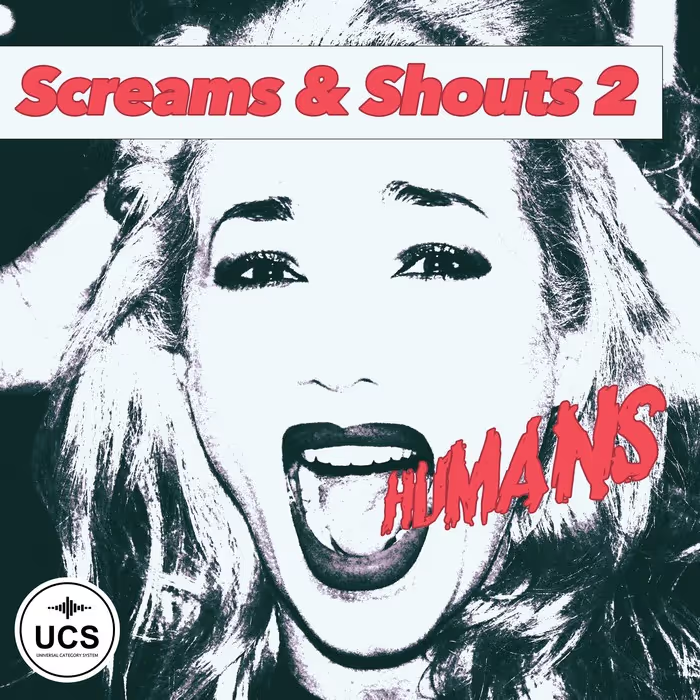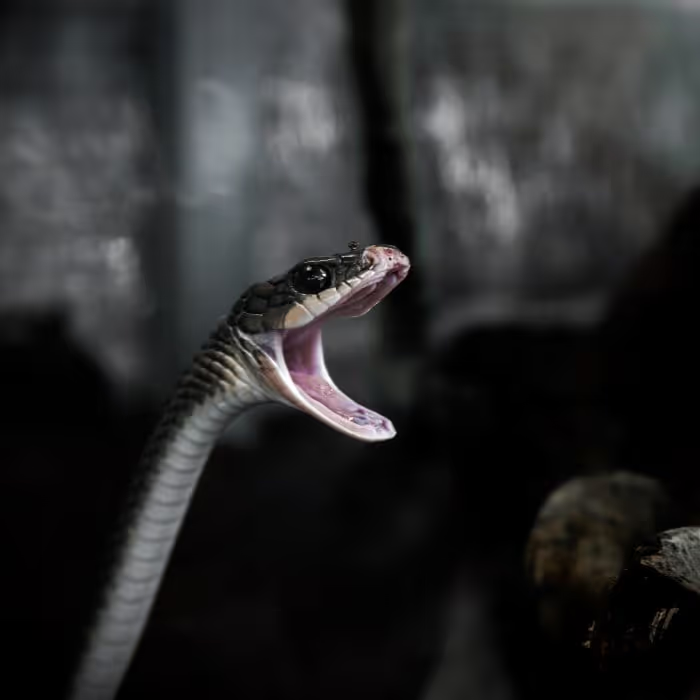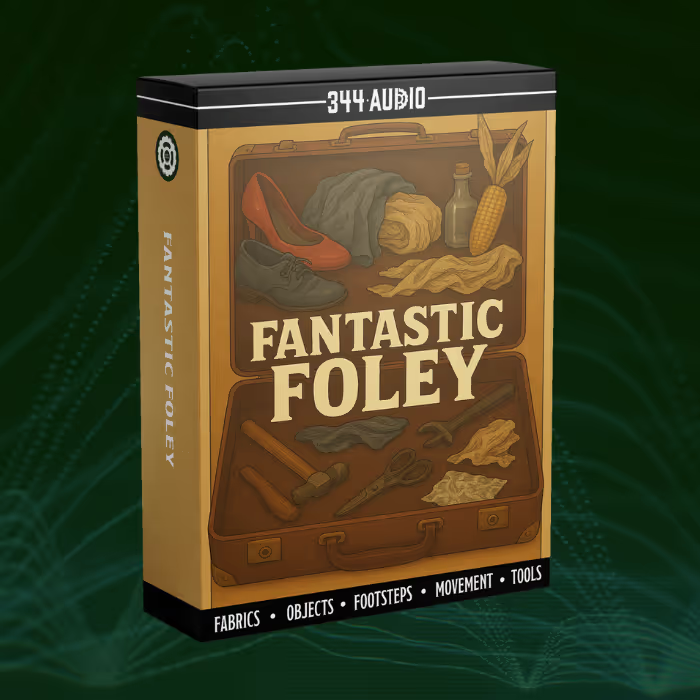Here, supervising sound editor/sound designer/re-recording mixer Ruy Garcia talks about letting the emotion and story make the rules instead of adhering to a strict set of dos and donts. He talks about the film's foley, recording custom sounds, working during the pandemic, playing with perspective, and so much more! Plus, he shares some really cool behind-the-scenes videos and pictures of their process.
Films have the power to transport the audience to another place, to take them out of their lives. That’s true for the people who work on the films, too. For 2x Emmy and MPSE Award-winning supervising sound editor/sound designer/re-recording mixer Ruy Garcia, working on A24’s Marcel the Shell With Shoes On during the pandemic was just what his psyche needed in those dark days of isolation and uncertainty because Marcel is a film about connecting with others, finding the beauty in the ordinary, and it’s about hope.
The film follows Marcel, a one-inch shell who lives with his grandmother (also a shell) in an Airbnb that’s being rented by a newly divorced documentary filmmaker named Dean. Marcel’s family disappeared when the former residents moved out and Dean decides to make a documentary about Marcel, to help him find his missing family.
Director Dean Fleischer-Camp uses a mix of stop-motion animation and live-action to tell Marcel’s story. The premise of this longer film actually started as three short films on YouTube years ago. You can check them out here: one, two, and three). The feel of these YouTube shorts carried through to the feature film, but Garcia was also able to explore new ideas for how Marcel and his world sound.
Here, Garcia talks about creating foley for Marcel (what does a walking shell sound like??), creating voices for the other tiny characters, making a macaroni trumpet, and playing with perspective. He explains how he honored the YouTube sound and documentary feel yet made the film fit the quality standard of a theatrical release. He shares behind-the-scenes videos and photos of foley tests for Marcel’s footsteps, his tennis ball car, ice skating in dust, and so much more!
Marcel The Shell With Shoes On | Official Trailer HD | A24
How did you get involved with Marcel the Shell with Shoes On?
Ruy Garcia (RG): I’ve worked a lot with Cinereach and A24 Films, particularly through producer Paul Mezey, who is a kindred spirit; he’s always very involved in the sound process and extremely knowledgeable about all its storytelling and mood-setting possibilities. We did Wendy, We the Animals, and After Yang together and have become good friends.

Paul invited me to interview with Dean Fleischer-Camp, who wanted to hear ideas from different people on how they would approach this project. I watched the original shorts that Jenny Slate (co-writer/voice of Marcel) and Dean made and loved their timing and lo-fi documentary style. (It was much later that I noticed the number of views the clips had and realized I was probably one of the very few people who hadn’t watched the shorts when they first came out.)
A big part of Marcel’s charm is his ability to find beauty in the banal and to find the intrinsic value in what most people might consider disposable, so I thought that too much polishing would work against it. I suggested leaving Dean’s voice off-mic throughout the film and adding glitches, camera movements, and intrusive background noise like you would get when shooting a documentary in a non-controlled environment.
I also thought we would need a lot of detailed work to bring presence and meaning to all the subtle things surrounding the characters. Apparently, it was exactly what Dean wanted because they hired me the very next day.
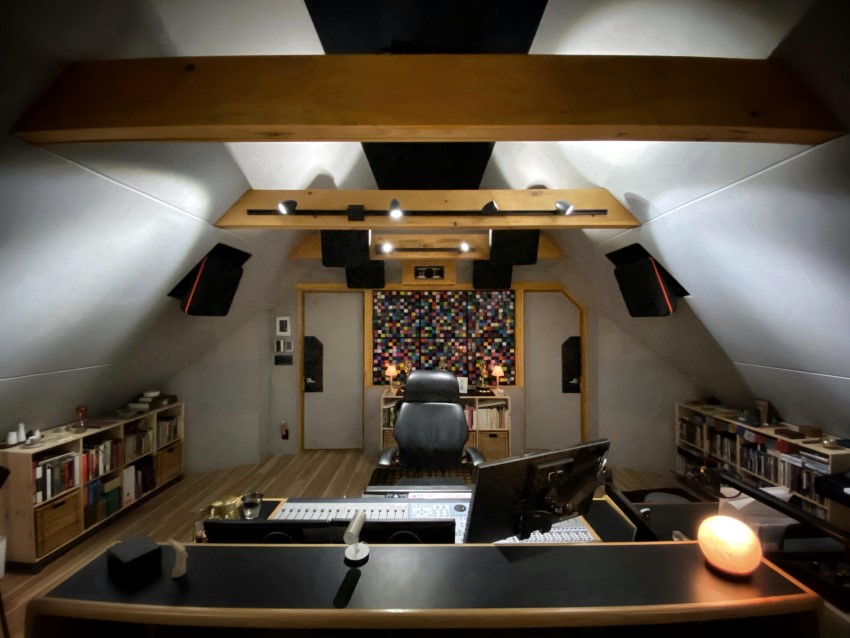
When did you get started with this film? And what were some of the director’s goals for sound?
RG: The last time that you and I talked, it was about the state of post-production during the pandemic. I was working on a beautiful film called After Yang, which I’m enormously proud of. I’m very fortunate to have a Dolby Atmos mixing stage upstate, so I was able to do most of that film at home through the pandemic.
Kogonada (director/editor on After Yang) and I were together for one day in my New York City studio at Postworks NY and later we spent three days on a big stage at Formosa Group in West Hollywood. Everything else was done through Zoom and email with many long phone conversations.
…I did most of the work at home including the pre-dubs…
Marcel had a similar situation. We started in January 2021 and I did most of the work at home including the pre-dubs, which (unless there is a bigger budget) I tend to do there anyway. Dialogue was cut remotely by Matt Rigby, who does miracles with his laptop, and there was an extensive foley process with Jo Caron’s studio in Montreal. We did a lot of tests and I think we ended up shooting like 12 days of foley.
After sound editorial, we were able to mix the final together at PostWorks NY. Dean came from L.A. with Disasterpeace (composer) and we worked very closely (well, 6-feet apart) with Paul and Andrew Goldman (producers). Postworks also gave us the possibility of playing on two stages simultaneously when we had more people attending and had to stay compliant with Covid safety requirements.
Part of why I prefer indie films is that you get to work closely with people and make decisions together. It’s not so compartmentalized. On most larger-scale projects (with some notable exceptions), directors rarely have enough time available; they mostly review and give you notes. But on an independent film, the creative process can usually be more present and collaborative and it’s easier to experiment both on and off the stage.
Dean’s main goal was safeguarding the emotional content and staying true to its essence.
Doing this film during Covid worked out well because it gave us time. Marcel needed a lot of attention. It’s stop-motion animation and we were basically creating a soundtrack from scratch while keeping the spirit of the original shorts.
Dean’s main goal was safeguarding the emotional content and staying true to its essence. This film’s shooting process was amazing; they basically shot it three times. Dean and Nick Paley (co-writer) first recorded Jenny (Slate) during the writing process, then shot all the film’s backgrounds with the human characters, and the dog. Additional voices were recorded again on location and then they filmed the stop motion with all necessary figures both on location and in a studio. The animation needed to be matched to the live-action, tracking all the camera movements and respecting lens distortion, depth of field, etc. which is kind of insane to me.
So, there ended up being about six different sound crews, with different equipment to record dialogue.
We didn’t really do a lot of ADR. It was mostly “production” sound. Actors were recorded on set as you would do on documentary interviews, and recording continued through the whole process. And, the 60 Minutes footage was done with their own crew. So, there ended up being about six different sound crews, with different equipment to record dialogue. In a way, that already gave it a documentary feel. Matt and I had to make sure the sound was consistent enough to keep us grounded in the story and because this is a feature film, it had to work under the scrutiny of a theatrical release setting.
Sometimes a big part of our process with directors or other creatives, especially people used to doing everything themselves for smaller formats, is being very clear in how to give guidance and confidence on what will or will not play in a theater and other formats. There is a fine line between subtlety and intelligibility. Also, even if doing a documentary, we don’t have to be literal to be honest.
There was plenty of creative space for beauty and abstraction but I doubt we’ll win any sound awards for this movie since it mostly sounds like an OCD YouTube clip, and it was all designed that way intentionally.
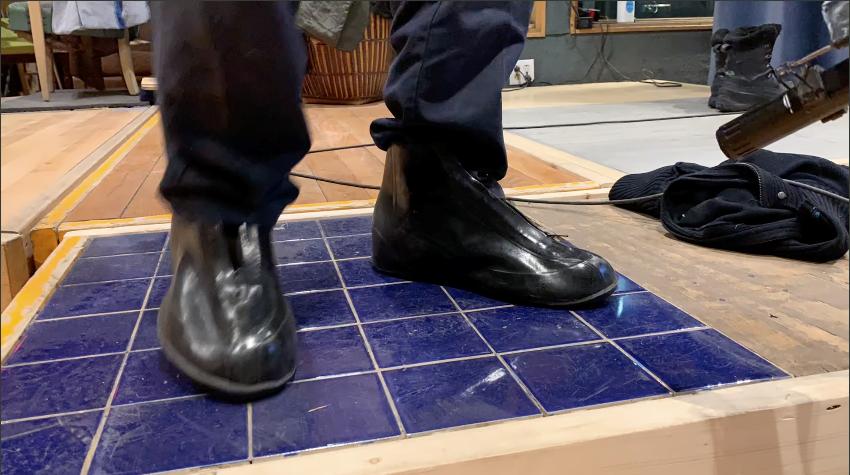
Can you talk about the foley on Marcel the Shell? What were some challenges in creating foley for a character so small? What were some opportunities to get creative, too?
RG: Foley was a lot of fun. It started with curiosity, “What does rustle and movement for a shell sound like? Would a shell’s feet squeak or slither? What about Nanna Connie’s walker? Does Marcel take his shoes on or off?”
For the record, the shoes are pink because he can paint them, but they’re actually part of his body.
We did short test videos for the footsteps to try things out before doing the whole film. Jo Caron’s amazing foley team – Guy Francoeur (foley artist), Thomas Garant (foley assistant), and Amanda Sheldon (foley assistant) – were extremely creative and enthusiastic.
We started with tiny keychain Converse high-tops for outdoor scenes.
Then we tried lime wedges for squishy feet.
And we tried leeks for soft steps.
We tried a roll of wire for Nanna’s walker.
We also used an actual shell for little sweeteners, like when Marcel bends over and hits the floor. You hear this hollow “tick” sound. It’s silly stuff like that.
After all these tests, we ended up with a combination of great-sounding options, but they had no personality. With footsteps (this might sound very nerdy) you need to hear a cadence; there is performance and intention. That’s the art of good foley walkers, you don’t even notice their footsteps because you feel the character – the speed of their walk, or the rhythm. It actually helps the scene flow.
So to make that happen, we ended up recording most of the footsteps with rubber boots over different surfaces at half-speed in Pro Tools. This allowed them to follow Marcel’s movements.
Then, when we played it back at the right speed, twice as fast and twice as high, it sounded natural, like a living walking being.
Dean is mostly behind the camera, so we made him sound like a serene Errol Morris; he’s always yelling from behind the frame, but in this case questioning a tiny shell instead of Robert McNamara or Donald Rumsfeld.
Another thing we did was foley for the camera movement, and the microphone keeps getting unplugged causing a static buzz in the middle of a take. In the car, you might hear engine rumble competing with the dialogue. We distorted all these beautifully recorded foley tracks and created sound effects to achieve the feel of non-professional videos.
Needless to say, we got extensive “mic bump, clicks and distortion,” and “unrequired extra movement and off camera footsteps” notes on our QC reports. But, if you watch the film, I think it’s pretty clear what is happening. Plus, if you hear it in Atmos, you’ll actually feel some of it above and behind you. We placed the sounds so they are moving with Dean’s point of view.
Another fun challenge was Marcel’s macaroni Shofar.
And then there were quirky ADR situations. We had to change lines for Isabella Rossellini (who voiced Connie, Marcel’s grandmother), so we sent her a microphone that she could plug into her phone at home on her farm. She did a great job, but Matt had to remove the sound of goats from some of her takes.
Another fun challenge was Marcel’s macaroni Shofar. The temp had a downloaded audio clip of “Taps,” and it didn’t quite work. I tried a bamboo flute, a kazoo, and other instruments and none of them had the right feeling. The trumpet is able to transmit so much immediately discernible emotion and we needed a moving melodic theme.
In came a brilliant trumpet player, Michael Leonhart, who plays with Steely Dan. I called him and asked, “Don’t judge me but what would you use for a macaroni trumpet?”
We tried different approaches and he rose up to the challenge, removing the valves of an old horn in his collection. That meant he had to tune it with just his mouth, but it hit the spot. I remember him telling me, “I don’t play this horn at home because my wife finds it annoying.”
It’s not literal but it is very effective. Michael performed in a moving and plausible way and it feels like Marcel is playing it. Disasterpeace added a backing pad to help it transition into a score element.
Michael is married to Jamie Leonhart, a wonderful singer and a somatic speech and singing instructor, with whom I had worked on other projects. She is also a SAG actress and performed the additional voices for Marcel’s lost family and friends. All this was tricky since it was still early in the pandemic, so we were still figuring out how to record several actors safely together. Jamie did it all remotely at their home studio and did a beautiful job.
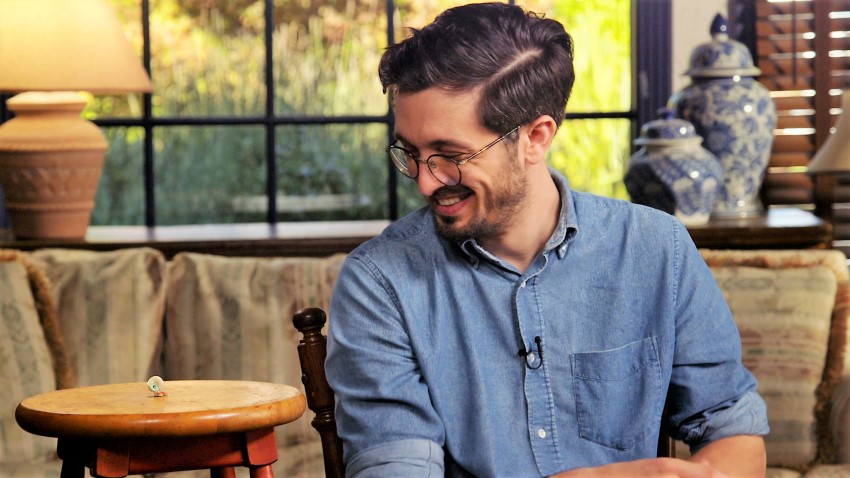
Marcel is so tiny (the size of a quarter). When the audience is in Marcel’s perspective, everything seems so huge – a lollipop wrapper is the size of a parachute, and a raindrop is like a bucket full of water. But you also have regular-sized things, like Dean and the dog, in this house with Marcel and his grandmother. Then, Marcel and Dean go out into the world, to Los Angeles, and you have both perspectives of this big, busy world and this tiny shell. How did you play that? And what sort of props or sound effects worked well for expressing these perspectives?
RG: You are right, and that was a big part of our conversations. Dean and I talked a lot as he was editing. We took different approaches for specific scenes and hopefully when you hear it all together, it doesn’t jump out at you. But we did talk about it conceptually and practically – what are we going to do; what are we trying to achieve, and do we need hard rules?
Dean really likes poetry – and he had a specific feeling that he wanted. I think we all can relate to his approach. There were discussions about, “Are we going to do it like a farse where everything is larger-than-life, or are we going to do it intimately because this tiny character is fragile?”
Marcel is this unique creature and his origin is not explained, which I love. But, is there a body inside that shell? Is there any kind of specific movement? Does he breathe? (I’m starting to sound like Marcel, asking, “Have you ever eaten a raspberry?”)
We explored all of these weird questions and tried different approaches to see how it felt.
We ended up following the emotional thread, so most of the perspective is from a tiny and vulnerable POV.
We ended up following the emotional thread, so most of the perspective is from a tiny and vulnerable POV. For instance, Marcel takes his Nanna ice skating. And the ice skating rink is a coffee table at their Airbnb with so much dust on it that it feels like snow.
We later see all these characters jumping on the sofa and it goes “pooooof!” You should feel all the dust flying off. You can’t be literal since realistically you wouldn’t hear dust fall or this tiny character jumping, but emotionally, you want to feel that impact and that’s where sound was fun and important. We had foley of dust falling and added a whoosh from me pushing on a Tupperware lid. That worked because it’s tiny and it moves air.
If you hear this soundtrack through a good system, you’ll be able to notice details in the low end. Initially, I didn’t consider using it much for this project, but we ended up really taking advantage of the subwoofer for things like the storm or the intrusion of the film crew that comes to their home.
Marcel’s voice is tiny, but you can still make it strong and present. There are big contrasting elements, but then you have these characters skating on dust. How does it sound when you skate on dust?
Thankfully, our Canadian team was working on the film in winter and they brought a huge block of ice into the studio and used two scalpels to do skating moves on the ice.
This allowed them to perform it to picture, to follow the movement. Then we added sliding air whooshes when the characters cross the screen as a more lyrical element.
Marcel moves around in his rover (a tennis ball). He’s carved a door on the tennis ball to climb in, and then he rolls around blindly all over the house. My first thought was, “Oh my God, that’s going to be a nightmare.”
In the edit temp, they were using an interesting rolling sound, but it was loopy and inconsistent. Marcel is bumping over and into all sorts of stuff when he’s inside, so we created a whole set of tracks for just that.
The foley team had a cool idea of putting a tennis ball on a wire and following it. It was great for specifics but you could hear more of the movement than the rolling.
For the actual rolling sound, they used wooden 2×4’s to make a resonating tunnel so they could roll the tennis ball up and down, following it with a boom. It was more natural – not always on-axis as the ball traveled. They recorded a bunch of different versions so I had enough to cut against locked picture.
We ended up adding another layer of felt fabric to the movement to make it feel softer. And we have the tiny footsteps of Marcel inside in the ball. It’s very, very, very nuanced and layered. I sometimes think, “Will anybody ever even notice this?”
After a lot of tinkering, we managed to find something that everybody in the room liked – something that was gentle and not too woody. It took some time and we got something fun and believable. I personally find joy in these tiny victories.
Jenny’s voice inside the rover was not futzed in post. She performed it as you hear it. I think she was talking into a paper cup? The sound helped guide her performance. It is not only the sonic quality, it’s the feeling and inflection since Jenny/Marcel felt even more enclosed that way. It worked so we didn’t touch it. Instead, we treated the other sounds sonically to match it. In my opinion, unless it takes you out of the film, it’s best to always favor performance over sound quality.
In reality, you would never hear a tiny shell gardening in a plant pot 10-meters away but you want the audience to turn around and hear it.
Going back to perspective, on exterior shots you have to create a sense of distance with EQ and subtle echoes. Placement and contrast help. Sometimes Connie is gardening far from camera. In reality, you would never hear a tiny shell gardening in a plant pot 10-meters away but you want the audience to turn around and hear it. There’s nothing wrong with taking artistic licenses to help your story.
For the lonely rain sequence, we used foley raindrops with finger taps or water falling onto dirt so that you would hear every drop hitting. In that case, we switch to Marcel’s perspective and you can hear every low-end impact drop resonating through his body, as opposed to our objective, thin tap, tap, tap rain sound. We layered it with actual rain sweetened with some applause. And I feel that makes the scene so beautiful because it’s both intimate and immersive.
There’s an action scene with a chipmunk, and the chipmunk almost sounds like a dinosaur.
Another challenge was the drunken bee. How does that sound? The bee is sick because from drinking too much nectar. We tried little bee farts – little “phutt!” mouth noises pitched up – but we didn’t want it to be too slapstick. It ended up working only off camera; you can hear these tiny bee farts in the surround channels as she flies away. That’s something that most people won’t notice but it’s felt and my 10-year-old self loves it.
There’s an action scene with a chipmunk, and the chipmunk almost sounds like a dinosaur. So there were many little experiments.
There’s a beetle and three spiders that I voiced by using a higher register of my voice, making little guttural meeps and purring noises, and then processing that by pitching it more and filtering it with Soundtoys FilterFreak and Crystalizer plugins.
We also needed footsteps for ants going over a pipe. I took some insect recordings and ran them through a pipe IR in Audio Ease’s Altiverb. It was stupidly easy and it worked really well.
Mariusz Glabinski helped a lot with the backgrounds, finding options for the house and garden. He cut a big collection of room tones that worked very well. We had to decide if we would have bugs outside, or not. Do we hear a lot of birds? Would the birds eat them? Are the birds threatening?
It is very important to have the objectivity to honor the story and kill your darlings for the common good.
Mariusz probably spent days choosing and cutting bug sounds to match the different spaces and seasonal changes. We mixed them and made many adjustments, panning them to different areas, and changing the rhythms. But then, on one of the final playbacks, there was consensus that the backgrounds were distracting, so we killed the bugs. That is a reality of the film sound process. That’s the glamour of our work. It is very important to have the objectivity to honor the story and kill your darlings for the common good.
Isaac Derfel, a great sound effects editor, was extremely helpful during the later part of the process; particularly the cars, the social media sequences, and the final skating stuff. He had just gotten a puppy named Stelia, and he recorded all her sounds at home. He recorded her approaching and going away, drinking water up close to the mic, barking, breathing, and so on. It’s the sound of a real dog in a real space following the picture’s perspective, which was way easier to mix than a cut and verbed sound library dog.
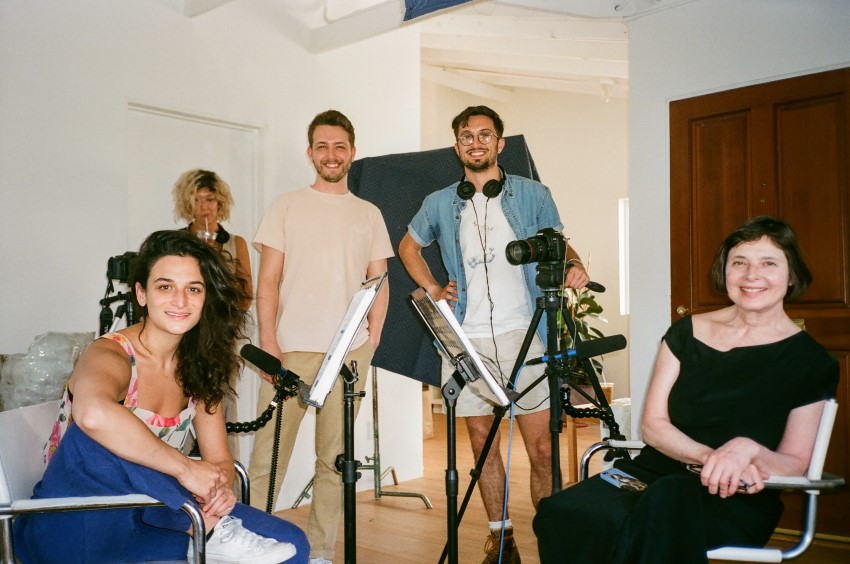
What were some other ways you honored the documentary feel for the film?
RG: A lot of it was following Dean’s response to things in the mix. He’ll feel things viscerally and he’s very aware. For example, Matt is an iZotope RX master. He’s saved so many impossible production takes for other projects. But on this one, it was more about finding consistency, because the recordings came from different sources.
In a literal approach, you might say “that’s how documentaries sound.” But it’s distracting if the texture of the voice sounds is different on every scene. We tried to make it more homogenous and easy to digest, but we always had options available. For example, sometimes we would use the boom mic that was completely off-camera instead of the lav. Or, we’d filter the lav and add reverb with early reflections so it sounded off-camera. What you’d usually spend hours taking out, we were putting in.
…nobody noticed the air conditioning had turned on in the middle of the shoot.
There’s a beautiful sequence in which Marcel sings “Peaceful Easy Feeling,” and, funny enough, nobody noticed the air conditioning had turned on in the middle of the shoot. Once we heard it clearly isolated, it became distracting and we removed it. During the final mix, Dean felt there was something missing, that the scene didn’t really move him the way it used to. We actually didn’t do too much processing, but it was true; once you compare it again, there’s something missing, not necessarily better or worse, but different.
As a contextual aside, it’s important to be careful when cleaning up tracks. You run the risk of taking away their spirit. It’s similar to leaving a dish in the microwave oven too long and now it’s lost all the texture and flavor.
So here’s this beautiful impromptu performance and you get some undesired disturbance in the middle of it. The end approach was to leave it.
What we did wasn’t quite that dramatic, but Dean clearly missed that AC tone because it sounded really natural to him. There is also a super loud bird chirping in between a couple of lines. So here’s this beautiful impromptu performance and you get some undesired disturbance in the middle of it. The end approach was to leave it. Those details added to the natural feeling of it. There were, of course, many opposite cases where cleaning the tracks helped the emotion cut through more effectively. Really, there are no rules.
There’s a scene where Marcel and Dean are being interviewed by Lesley Stahl, and Dean is reluctant to be on camera. So we’d added the sound of a chair moving as if he’s sliding little by little out of frame. You never see that; you just hear his voice getting a bit more off-mic, or you hear him wiggling on the chair. But it’s not seen. It’s just felt. And I don’t think people have to know it’s there. It just implies Dean’s presence.
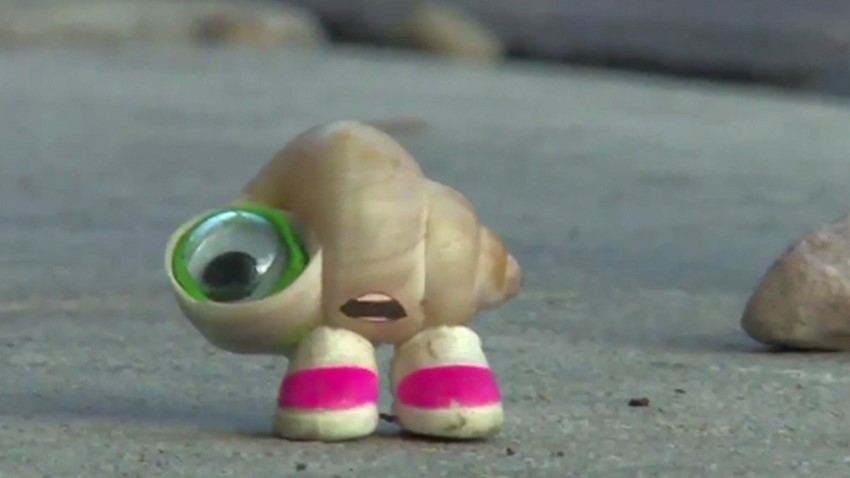
Near the end of the film, Marcel confides to Dean that he often finds himself going to the laundry room window alone to feel the wind blow through his shell. It makes a particular sound that Marcel enjoys, and he shares that with Dean. How did you make the sound of the wind blowing through Marcel’s shell?
RG: Dean had a clear idea of what he needed, and he was using a beautiful sound of wind blowing through a hole. We refined that. I worldized it by putting contact mics on a glass and playing through the miked-up glass rim. It worked; you could tune it – pitch it up and down. It wasn’t complicated.
I find it’s more fun to perform sounds than to cut them.
I’ve been using a lot of samplers lately, like Native Instruments Kontakt. I find it’s more fun to perform sounds than to cut them. Sometimes I’ll run a scene and play an atmospheric sound or any other effects via the sampler keyboard. Every pass is a little bit different, imperfect, and raw with more variations. I’ve used this method more on other films, for tonal atmospheres and special effects or VFX scenes. I’ll just play it and see how it sounds.
I use a ROLI keyboard which has continuous keys. And they also make this little square touch-sensitive pad that you can connect to your computer or even a phone. Sometimes I’ll just play with the different fx to see what comes up.
[tweet_box]Ruy Garcia on Making the Sound of ‘Marcel the Shell With Shoes On'[/tweet_box]

What was your favorite scene for sound editing?
RG: I am often editing and mixing at the same time, even adding a bit of reverb (like -30 dB; nothing huge) in the edit to glue everything together – the dialogue, foley, and effects. I usually have two reverbs going at the same time: one for making all the elements gel, and one for creative purposes (making things sound magical or whatever). I like working with echo and I love using weird delays. So, I’m basically mixing from the start. I’m matching things to see how they sound together. By the time we get to pre-dub, I’m halfway there.
It’s very simple: Marcel’s voice, the beetle and his tiny wing movements, plus melancholic rain. It’s quiet and moving.
Overall, I’d say my favorite scene for sound is where Marcel is sad and a little beetle flies in and it starts raining. I love that sequence. It’s very simple: Marcel’s voice, the beetle and his tiny wing movements, plus melancholic rain. It’s quiet and moving. Marcel is vulnerable and he has a friend standing by him. Sometimes that’s all you need.
There’s another scene with Dean and Marcel overlooking L.A. from atop a hill. It’s just the sound of the wind and really distant cars.
I loved the scene of the wind going through Marcel’s shell on the windowsill. You can hear a washing machine in the background, wooden hangers rattling, water drops from a rag, and Disasterpeace’s atmospheric score. He sent an extra transition stem at the last minute of the print master and we used just the low-end stem of that. It’s only there for a second when we cut to black and it works perfectly to transition away. I think it was Kubrick who explained that movies should be more like music, and not dialogue – that you have these emotions and feelings and sensations. I think we achieved that with those scenes. It’s not even about the dialogue or the plot; it’s what you’re feeling.

Was there a scene that went through the most evolution during the mix?
RG: A lot of scenes changed radically. For instance, the use of backgrounds changed. As I mentioned before, at first we had more sounds of the seasons changing outside, like we had cicadas and stuff. But it ended up being a little distracting. Then we were adding more roughness when they’re outside.
60 Minutes and Lesley Stahl play an important part in the film. Marcel and his grandmother watch her on the neighbor’s TV. So we experimented with how 60 Minutes actually sounds. At first, I tried to make it sound like TV, more mono, but that didn’t really work because it felt bare and dry in contrast with the rest of the film.
…that didn’t really work because it felt bare and dry in contrast with the rest of the film.
Marcel and Dean (spoiler alert) do get interviewed by 60 Minutes and we needed to feel the disruption. That was a big experiment and we radically changed approaches a couple of times. The TV equipment comes in a big truck and their crew was actually there, so we had takes from production sound. We added more elements to the background to create a sense of the constant noise you’d have on a set.
I used to do production sound in another life, so I remember that every time I would ask for room tone was when all grips would start ripping tape and moving their hardware around. So, if I wanted to record noise, I would just ask for silence.
Issac and I cut in sounds of C-stands falling, the rattling of Anvil cases and carts moving from side to side, and background chatter (film crews like to talk).
… you hear the roar of this massive trailer driving in and you have to hear the little fluttering sounds of the Monarch butterfly flying off.
In contrast to that chaos, you have a little butterfly standing on a plant as the sequence starts; you hear the roar of this massive trailer driving in and you have to hear the little fluttering sounds of the Monarch butterfly flying off. It prompts the transition of the crew’s arrival, where you have drivers listening to hip hop as they press the button for the lift-gate and that makes a big mechanical sound. Everything is enormous and noisy and there’s non-stop talking.
For that scene, Marcel is in the house, but we play from his perspective in terms of sound. It gives the audience an idea of what Marcel is about to encounter. We could be much more lyrical and emotional.
In another sequence, after Marcel asks the world for help in finding his missing family, people show up at their home and ask for selfies without helping at all. There’s a group of them constantly outside. I think that’s my daughter’s first film speaking part, playing one of the teenagers getting selfies.
There’s also room for sound to help the comedy.
There’s also room for sound to help the comedy. The switch on the LED light that Marcel leaves for his grandmother, at first we had the actual sound of that lamp. But it wasn’t funny. So we put in a weird, over-embellished switch sound and it became a moment. And when the colander falls, we have faint prison sounds in the background.
In another scene, Marcel steps in honey and walks up the walls. So we recorded some squeaky, sploshy sounds, and then when he slides down, we used long glass squeaks.
Marcel tries to jump over the bathroom sink and you hear the hollow porcelain squeaking of his footsteps. It’s like a Jacques Tati film – when every character walks, it’s almost musical.
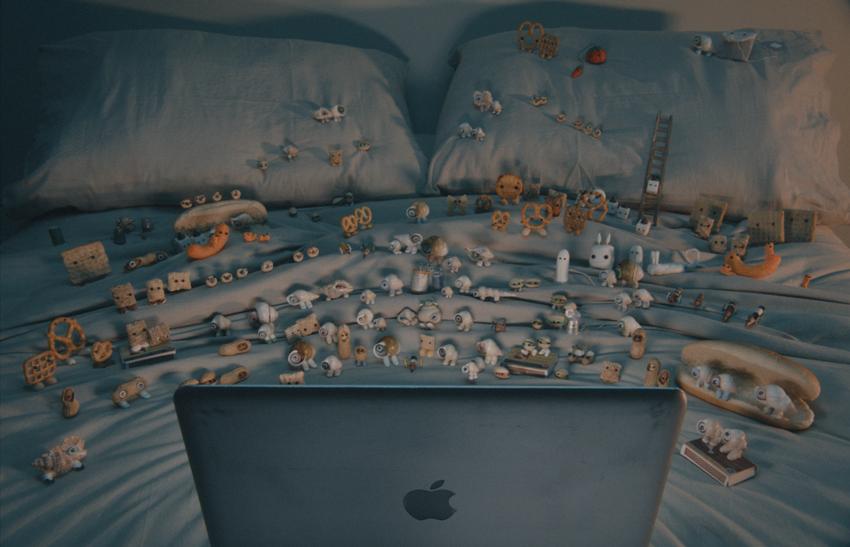
In terms of sound, how was working on Marcel the Shell with Shoes On a unique experience for you?
RG: This film is very moving. It was probably the best movie to work on at that complicated quarantine time. It was nice to sit down for hours, trying to figure out this lovely character. Of course, we had complications but it was a joyful process overall.
You have to get yourself into this mindset that anything is allowed. Sometimes you do have to put on the technically responsible supervisor hat and make sure the story carries and the plot moves forward, but still, you have to understand and embrace the poetry of it – finding the beauty in everyday things. It felt almost like a Buddhist perspective of openness and basic goodness, and you get that when you’re working on it.
Sometimes it can be helpful when a director doesn’t know the technical inner workings of our craft; it allows them to focus on the emotional side.
Dean was super enthusiastic throughout the whole process. He had clear ideas of what we had to honor and what we could get rid of. It’s almost like putting the director’s ear over yours, to understand how they’re listening to things. I always find it rewarding to get that, because, as you said, this work is so much about perspective, and Dean has lived with this character for years. You have to be really arrogant to think that you know something better than the filmmakers about how this film should be.
Sometimes it can be helpful when a director doesn’t know the technical inner workings of our craft; it allows them to focus on the emotional side. I can worry about the EQ and compression and panning.
We tried a lot of comedic stuff – adding hits, grunts, and weird stuff that made moments a bit more special – and it was surprisingly clear when it worked or not.
I am extremely grateful to these people that brought us two beautiful films – one after the other – in the middle of difficult times, and both were so good for my soul. After Yang is about isolation, memory, the essence of family and how loss changes us. And Marcel is about acceptance, appreciating beauty, and finding joy in connection. What is there not to love?
A big thanks to Ruy Garcia for giving us a behind-the-scenes look at the sound of Marcel the Shell With Shoes On and to Jennifer Walden for the interview!


